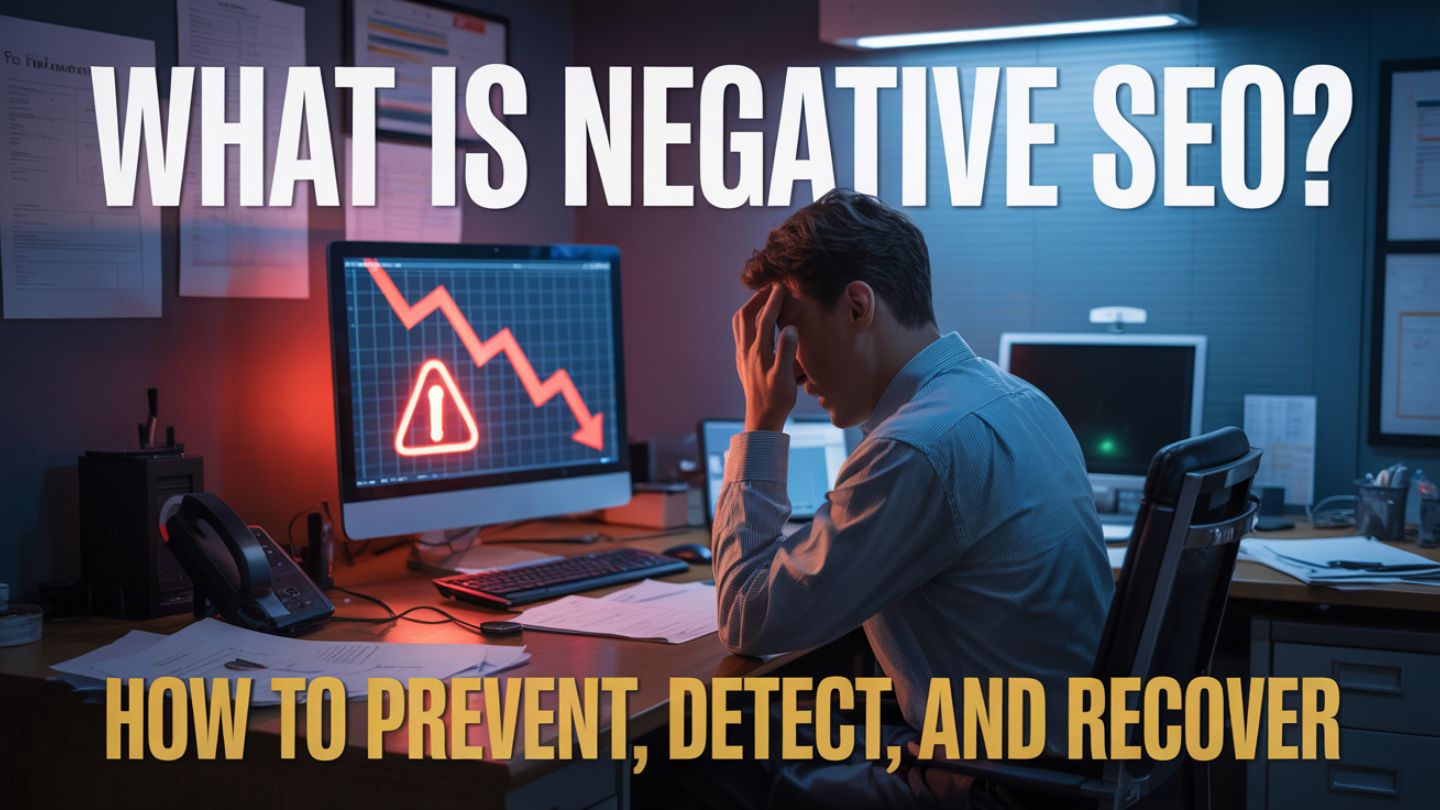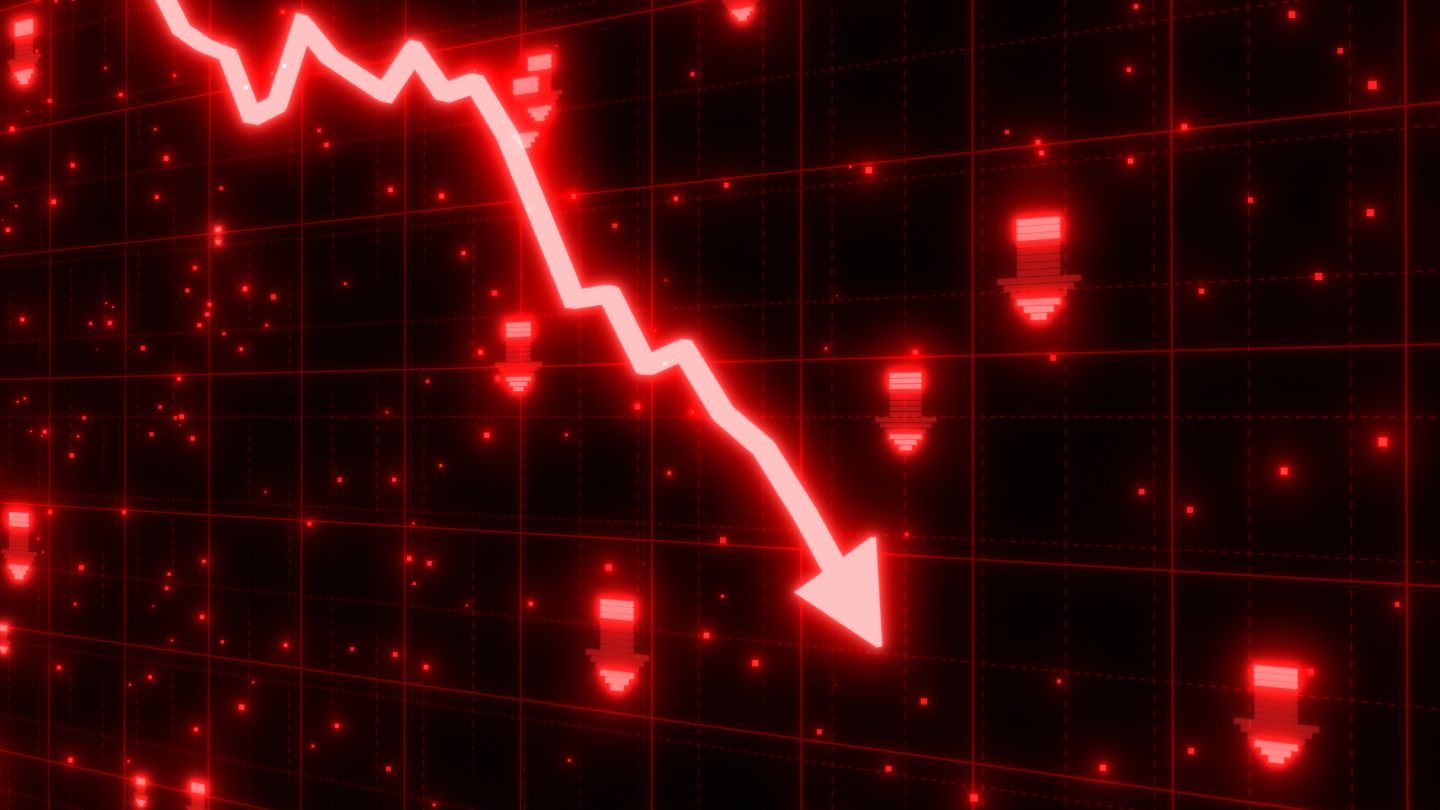
Search engine optimization (SEO) is meant to help businesses rank higher through ethical practices. However, in the competitive digital landscape, some bad actors use negative SEO—malicious techniques designed to harm another site’s search rankings. Whether through spammy backlinks, content theft, or false reports, these attacks can erode your site’s reputation and visibility if left unchecked.
In this guide, we’ll break down what negative SEO is, how to detect it, and the strategies you can use to prevent and recover from it.

 If you suspect you’ve been targeted, take immediate action:
If you suspect you’ve been targeted, take immediate action:
Understanding Negative SEO
Negative SEO involves unethical, manipulative tactics aimed at reducing a competitor’s search rankings. Unlike traditional SEO, which builds authority through quality content and link-building, negative SEO sabotages performance through black-hat strategies. These attacks can take various forms:- Spammy backlinks from toxic domains
- Duplicate content scraped from your pages
- Fake reviews or false DMCA complaints
- Hacking or malicious redirects
- Negative social signals or bot-driven engagement drops
Common Types of Negative SEO Attacks
- Toxic Backlink Campaigns Attackers may create thousands of spammy backlinks pointing to your site to make it look like you’re participating in link schemes. This can trigger penalties or ranking losses. Conducting regular technical SEO audits helps you identify and disavow these links before they do damage.
- Content Scraping and Duplication Content theft is another major issue. Scrapers copy your articles and publish them elsewhere, sometimes outranking your original content. Canonical URLs and structured data can help search engines recognize your content as the original source.
- Fake Negative Reviews Attackers can post fake reviews on third-party platforms, damaging brand reputation. Building positive brand mentions and maintaining transparency in your digital footprint can offset this.
- Hacking and Malware Injection Website hacking not only harms your SEO but can also cause deindexing. Regular monitoring, strong passwords, and SSL protection are crucial.
- Deceptive Click or Traffic Bots Bots can inflate bounce rates and send poor engagement signals. If your analytics show unusual spikes or sudden traffic drops, review your recent ranking changes and site analytics.
How to Detect Negative SEO

1. Monitor Backlinks Regularly
Use Google Search Console to review your backlink profile. Any sudden influx of irrelevant or foreign-language links may signal an attack. You can connect Search Console with GA4 for more integrated insights.2. Check for Duplicate Content
Use plagiarism-checking tools or perform a site search using “intext:” queries. If your content appears elsewhere without permission, report it to Google using the DMCA form.3. Track Website Performance
Unexplained ranking drops, slower crawling, or crawling errors may indicate technical interference. Google ranking factors such as user experience, backlinks, and authority signals can all be impacted.4. Audit for Technical Issues
404 errors, broken links, or redirect loops can be manipulated by attackers. Regularly inspect your site to fix broken backlinks and minimize technical.How to Prevent Negative SEO
- Build a Strong SEO Foundation Regularly update your site’s content and implement secure, white-hat SEO practices. Following principles from Google’s SEO Starter Guide ensures you remain compliant.
- Secure Your Website Use HTTPS, strong admin passwords, and regular backups. Set up Google Search Console alerts to get notified of indexing or security issues.
- Diversify Your Traffic Sources Don’t rely solely on organic search. Use email marketing, social media, and paid campaigns to protect visibility from search volatility.
- Manage User-Generated Content Wisely Monitor user comments and forums to prevent spam. Optimizing user-generated content can enhance SEO value without exposing your site to spam.
- Keep an Eye on Algorithm Updates Sometimes ranking drops are caused by Google’s system updates rather than malicious activity. Stay informed about Google-confirmed search bugs and fluctuations.
How to Recover from a Negative SEO Attack
 If you suspect you’ve been targeted, take immediate action:
If you suspect you’ve been targeted, take immediate action:
- Disavow toxic backlinks using Google’s disavow tool.
- Fix broken backlinks and internal redirects.
- Submit reconsideration requests if you’ve been penalized.
- Rebuild trust through quality content, legitimate link-building, and positive engagement signals.
Final Thoughts
Negative SEO can harm your site’s reputation, rankings, and long-term performance—but only if left unchecked. Proactive monitoring, regular audits, and ethical optimization can make your digital presence resilient to these threats. If you need expert guidance in safeguarding your SEO or improving visibility, reach out to The Ocean Marketing for professional SEO services. For a personalized consultation, contact us today and protect your website’s hard-earned credibility.
Marcus D.
Marcus D began his digital marketing career in 2009, specializing in SEO and online visibility. He has helped over 3,000 websites boost traffic and rankings through SEO, web design, content, and PPC strategies. At The Ocean Marketing, he continues to use his expertise to drive measurable growth for businesses.

